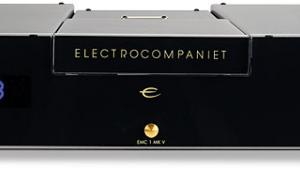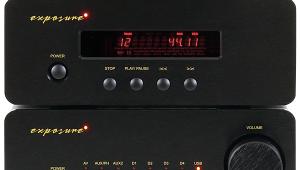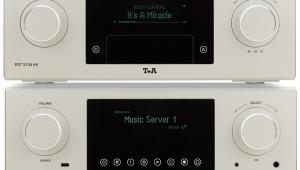McIntosh MCD85 CD/SACD Player/USB DAC

 Well, one thing's for sure: the new SACD/CD player/DAC from McIntosh looks quite unlike any other machine of its kind. So, does the sound live up to the unique style?
Well, one thing's for sure: the new SACD/CD player/DAC from McIntosh looks quite unlike any other machine of its kind. So, does the sound live up to the unique style?
Take a quick look at the £4995 McIntosh MCD85, and you'd probably think it was another in the seemingly endless line of amplifier variations emerging from the Binghamton factory in upstate New York. In fact, the first sign that this isn't actually a power amp is the weight. Thanks to their hefty transformers and solidity of build, the company's powerhouses tend to be back-achingly heavy, and arrive on pallets – the new MA1200 integrated amp, for example, weighs in at a shade under 49kg, and the MC901 monoblock is getting on for twice that. By contrast, the MCD85 is a manageable 12.5kg boxed, and a positively featherweight 9.3kg in the buff.
Yes, this may match other models in the company's range, in that characteristic 'modern retro' style, but what we have here is something different, if arguably just as 'old school'. This is a combination SACD/CD player, complete with a loading tray within the lower, slope-fronted part of the housing, combined with a digital section hosting inputs on a range of connections. There are two optical, two coaxial, and – probably of most interest – a USB-B computer connection that will accept files at up to 384kHz/32-bit and DSD256/11.2MHz.
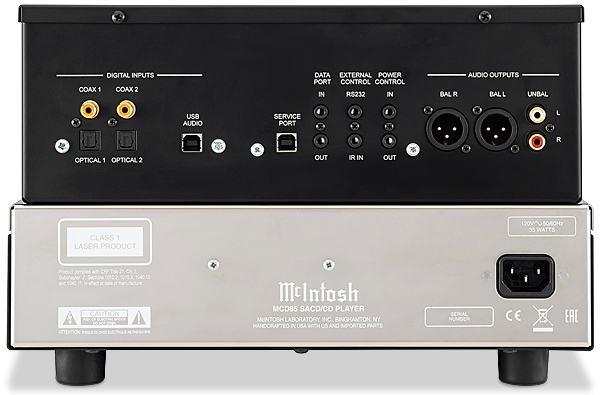
Team Player
So, while some will have you believe that a machine designed to play physical media – you know, discs – is a dinosaur in an age dominated by vinyl and streaming, the MCD85 responds to that charge on two levels. One is that many of us still play discs, be they standard CDs or the Super Audio variant, and the other concerns the 'duality' of a machine designed to do more than simply spin silver into music.
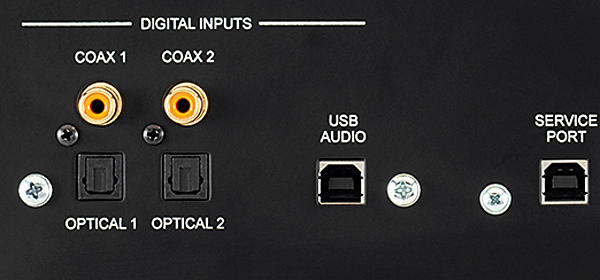
At just under 31cm wide and standing a shade under 20cm tall, the MCD85 doesn't really look like a CD player, does it? Well, while the company has rather more conventional – if not exactly slender – 'wider but shorter' SACD/CD players in the form of the MCD300 and MCD600, and a brace of SACD/CD transports, the styling of the MCD85 makes sense when you view it in the context of a complete McIntosh system. It matches the size and styling of the £4295 C8 valve preamplifier, while the £4995 MC830 solid-state monoblock power amp is similar, if a little taller.
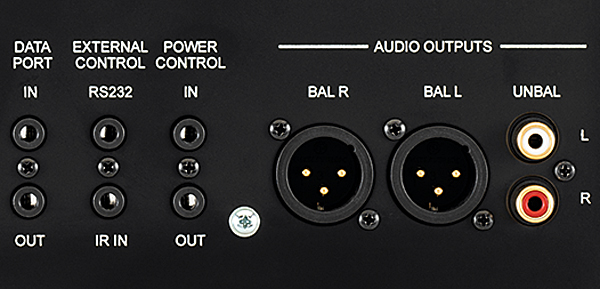
And for all that 'classic' look, the components are able to talk to each other via control links, making 'one remote' operation perfectly possible. Along with its digital inputs and fixed-level RCA and balanced XLR line-outs, the MCD85 has 'data' sockets for system control, as well as RS232, external infrared sensor input and 12V trigger connections. It also comes with a second USB-B port that is used for service functions.
Dual Laser
Think of this player as a transport and DAC in one box, and you're not too far from the truth. The loader and its dual-laser disc-reading mechanism – one lens, but separate lasers for CD and SACD operation – are in the lower section, with the control electronics, display and double-differential ESS ES9016S DAC in the upper part. And while the digital section has wide-ranging file format capability, the same goes for the transport, for as well as standard CDs and SACDs, it can also read recordable media, including DVD data discs (to 48kHz/24-bit on CD±R/RW discs, and up to 192kHz/24-bit and DSD128 on home-burned DVDs).
Of course, styling this player to match the company's amps does bring with it some control oddities… In addition to relatively conventional buttons either side of the large display to open and close the loader, play/pause/stop disc replay, and select between layers on hybrid SACD/CD discs, the MCD85 also has two large control knobs straddling the disc tray.
The functions of these knobs require a little familiarisation because both have dual-labelling. The knob to the right turns the power on and off and scrolls through the digital inputs, while the one to the left performs track-skip and, with a push, takes the user into the set-up menu.
Ready To Rack
Once comfortable with the workings of the knobs most users won't find much to trouble them in the set-up menu. McIntosh offers an auto-off setting, powering down the player after 30 minutes of no use; auto-muting to prevent noise when switching file formats; the front IR sensor can be switched off when using a remote one plugged into the rear; and unused inputs can be removed from the list shown when scrolling through them. Other settings in the menu relate to the various system and external control options.








